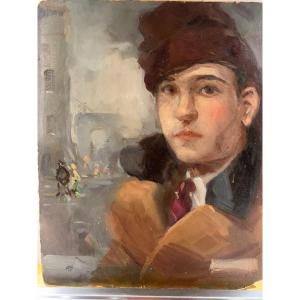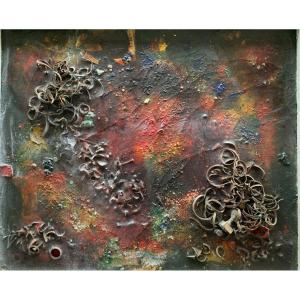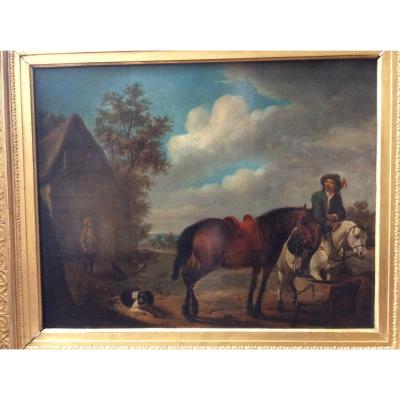This small painting is part of a pair.
Pietro Graziani (17th/18th century), entourage.
A pair (two) of small paintings.
Antique 19th-century frame in gilt wood.
In good condition.
Oil on canvas.
Canvas relined.
Dimensions with frame: H 34 cm x W 26 cm each.
Dimensions without frame: H 26 cm x W 17 cm each.
This painting is part of a pair of paintings.
Both paintings are the same size and are painted by the same artist.
In this work, the scene unfolds in a military camp with tents, where an escape and pursuit of a man in a turban and colorful Oriental-style clothes takes place, possibly a Turk trying to steal the banners. Behind him, a warrior on a horse has already raised his sword to stop the fugitive.
This composition conveys a strong sense of speed, movement, and time.
The intensity of the action is masterfully embodied in the painting technique: the scene appears almost as a sketch, with each brushstroke being a bundle of emotion and movement.
These painting techniques are very bold and foreshadow the painting of a later period. However, they certainly draw on the traditions of Neapolitan painting, especially Salvator Rosa, an extraordinary artist, poet, and philosopher.
Notes about the painters:
Francesco and Pietro Graziani
Francesco and Pietro Graziani were two painters active in Naples and Rome between the end of the 17th century and the beginning of the 18th century. They are often referred to by the name "Ciccio Graziani" or "Ciccio Napoletano."
Many small-format battle paintings attributed to "Ciccio Graziani" have been identified. Since the 18th century, these works have appeared in famous private collections and later in public collections. These paintings have a distinctive style and execution, and examples can be found in various museums. In Italy, these include museums in Florence, the Pallavicini Gallery in Rome, the Capitolina and Corsini museums in Rome, the Bardini in Florence, the Civico in Deruta, and art galleries in Naples and Prato. Internationally, collections in Geneva, Grenoble, Nantes, Schleissheim, and the Walters Art Gallery in Baltimore also feature these works.
Ancient texts refer to the Grazianis as "Battaglista" (battle painters), indicating that there were clearly two individuals with this name. One source mentioned by Pietro is unsure if this Graziani was the spouse or son of Ciccio Graziani, who left works in Roman churches.
It is certain that there were two battle painters named Graziani, likely close relatives, and both from Naples. The evidence suggests that most of the paintings attributed to Ciccio Graziani (or, Neapolitan) show a style from the late 16th century, leaning towards 18th-century techniques. These works display Neapolitan creativity, influenced by artists like Falcone and Salvator Rosa, and were significantly enhanced by direct knowledge of Borgognone's works.
Their paintings often depict lively and crowded scenes of chivalry on clear landscaped backgrounds, with characters outlined with a quick and almost artificial stroke, anticipating 18th-century painting. The smaller format works, showing early hints of rococo taste and rapid execution, draw inspiration from Neapolitan inventiveness, particularly from Falcone and Salvator Rosa, reinforced by the direct knowledge of Borgognone's battle scenes.
Even today, distinguishing between Francesco (the senior Graziani) and Pietro (the junior Graziani) based on style and execution can be problematic. The name "Ciccio Napoletano" was likely used since the 18th century, possibly by Pietro himself, and appears in specific collecting practices, such as the Corsini inventories.















































 Le Magazine de PROANTIC
Le Magazine de PROANTIC TRÉSORS Magazine
TRÉSORS Magazine Rivista Artiquariato
Rivista Artiquariato